News 2012
Algorithm proves useful for analysis of neuronal data: “Support vector machines” perform well in spike pattern classification with a leaky integrate-and-fire neuron
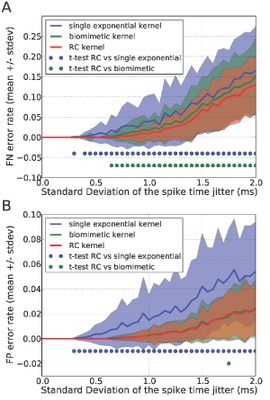
21.11.2012: An article by researchers from the Bernstein Focus Neurotechnology / Bernstein Center Freiburg, appearing in the journal Frontiers in Computational Neuroscience, presents a new approach to the problem of classifying temporal patterns in the spiking activity of nerve cells. The scientists devised a novel supervised learning rule that is based on the widely used concept known as “Support Vector Machines”. They demonstrated how this technique can be used to determine the synaptic weights of a standard model neuron, which after training very effectively classifies spike patterns – and proves to possess other uses in computer technology.
Bernstein workshop becomes garage for soapbox cars: University’s family service offers holiday programme at the BCF
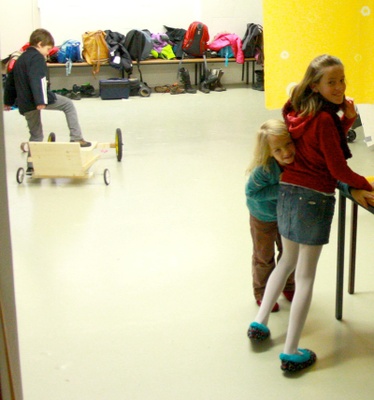
15.11.2012: Building soapbox cars and treasure chests stood at the centre of activities in this year’s holiday programme during the autumn school break. The newly cleared and renovated workshop of the Bernstein Center Freiburg offered ample space for 20 children between 6 and 12 years of age to practice their skills in woodworking, as well as to relax and play. The former workshop area of the BCF has a history for novel constructions: The starting block used in every sprint race around the world had been developed in this place.
A mere urge or a deliberate intention?: Scientists address the relevance of philosophical intention theories to brain-machine interfaces
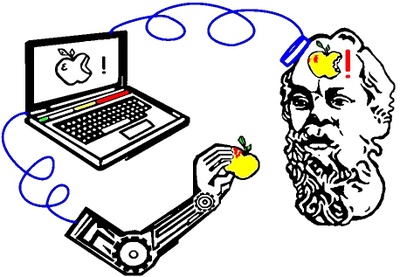
09.11.2012: When a seat mate on a train is talking loudly on the cell phone, one may experience an urge to grab the phone away, but may reach for one’s set of earplugs instead. The distinction between a spontaneous urge, a deliberate intention, an abstract wish, and the usual compromise between them is generally not a major problem for humans in every day life. But what if brain activity has to be used to give paralysed patients control over prosthetic devices? Here, a clear differentiation between these different mental states is necessary. Thus, these concepts gain very concrete significance in the field of neurotechnology.
Hand movement direction detected in infrared light signals from the brain: New recording technique closes gap in approaches towards brain-machine interfaces
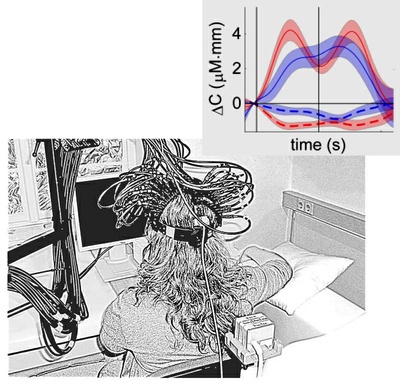
08.11.2012: The activity of nerve cells in areas of the cortex responsible for body movements is tuned to different parameters, such as hand movement direction. These signals can be detected and used in order to create brain-machine interfaces (BMIs), which allow the direct control of a computer or a robotic arm through brain activity. Neuronal activity creates a number of different signals that can be exploited. The most accurate is the pulse-like activity of a single nerve cell, but this is only detectable with sensors in the brain. Furthermore, electrical activity of thousands and millions of nerve cells in any area of the brain sum up and give rise to neuronal population activity. A tuning of such signals in relation to movement directions has been found not only for spiking activity but also for neuronal population activity (which can be measured in different forms: local field potentials, electrocorticography, electroencephalography, magnetoencephalography, or functional magnetic resonance imaging).
Stimuli are selected through selective synchronization: An article in the journal NEURON demonstrates how selective synchronization between brain areas can modulate the effective connectivity between them.
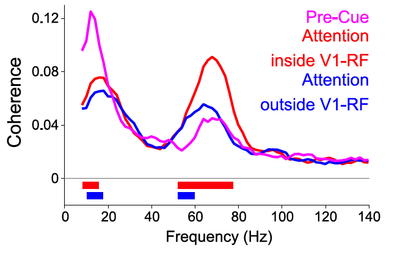
06.09.2012: A central motif in neuronal networks is convergence, linking several input neurons to one target neuron. In visual cortex, convergence renders target neurons responsive to complex stimuli. Yet, convergence typically sends multiple stimuli to a target, and the behaviorally relevant stimulus must be selected.
This semester: "Biologie des Menschen" Lecture Series [in German]
![This semester: "Biologie des Menschen" Lecture Series [in German] This semester: "Biologie des Menschen" Lecture Series [in German]](https://www.bcf.uni-freiburg.de/news/2012/20121010-bioringvorlesung/@@images/8ba3ce03-b926-48cf-a158-38dbf6a4a5fc.jpeg)
10.10.2012: This winter semester, the University of Freiburg will host a lecture series on human biology. The lectures are public and are held in German. Three of these talks revolve around the field of neuroscience.
Multiple Contacts Are Key to Synapse Formation: Team of Scientists from Freiburg and Jülich Find Explanation for Formation of Connections between Nerve Cells

21.09.2012: Multiple synaptic contacts between nerve cells facilitate the creation of a new contact, as neuroscientists from the Bernstein Center Freiburg and the Forschungszentrum Jülich report in the latest issue of the journal PLoS Computational Biology. An integral mechanism of memory foundation is the formation of additional contacts between neurons in the brain. However, until now it was not known what conditions lead to the development of such synapses and how they are stabilized once created. By studying mathematical models, the scientists found a simple explanation for how and when synapses form – or disappear – in the brain.
Epileptic signatures - outside of epileptic seizures: Scientists find changes in brain networks during ‘normal’ activity between epileptic episodes
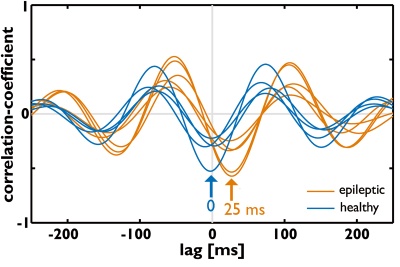
18.09.2012: Epileptic activity in the brain is characterized by recurring high amplitude signals in the electroencephalogram (EEG), or in recordings of local field potentials. This “signature” of neuronal activity is very different from activity found under healthy conditions. Between epileptic episodes, however, electrophysiological recordings of neuronal activity may appear to be completely normal. Signs of permanent pathological network conditions, however, should be found also in activity between epileptic episodes. The same holds true for neuronal activity leading to epileptic states. Researchers from Freiburg have now shown that the coupling of brain structures in activity between epileptic episodes is already measurably different from the coupling under healthy conditions.
"Doctor" or "Darling" The Subtle Differences of Speech: Scientists from Freiburg Find Brain Signals That Tell Who Someone Is Talking To
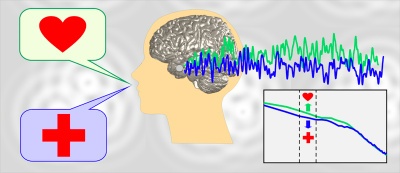
11.09.2012: Human speech comes in countless varieties: When people talk to close friends or partners, they talk differently than when they address a physician. These differences in speech are quite subtle and hard to pinpoint. In a recent special issue of the journal Frontiers in Human Neuroscience, Johanna Derix, Dr. Tonio Ball, and their colleagues from the Bernstein Center and the University Medical Center in Freiburg report that they were able to tell from brain signals who a person was talking to. This discovery could contribute to the further development of speech synthesizers for patients with severe paralysis.
More than just glue: Neuroscientists from Freiburg show that glial cells protect the brain from epileptic seizures
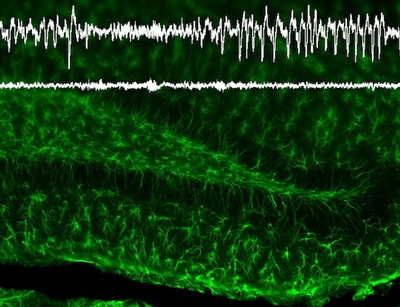
07.08.2012: Epileptic fits are like thunderstorms raging in the brain: Nerve cells excite each other in an uncontrolled way so that strong, rhythmic electrical discharges sweep over whole brain regions. In the wake of such a seizure, the nerve cells are severely affected, and permanent damage is possible. The glia, a class of cells that surround the neurons in the brain, was long suspected to contribute to the damaging effects of epilepsy. Quite the opposite is the case, as the team of Prof. Dr. Carola Haas from the Bernstein Center and Dr. Matthias Kirsch from the Institute of Anatomy and Cell Biology at the University of Freiburg shows for the first time.
BCF members' review among top cited papers: In a publication analysis by the "Laborjournal", a review co-written by Marlene Bartos and Peter Jonas reaches 2nd place
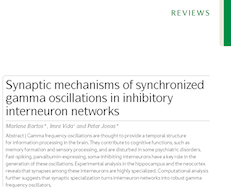
01.08.2012: The magazine had analysed publications in the field of anatomy from the years 2006 to 2009 with at least one co-author working in Germany. With an impressive number of 376 citations, the review article Synaptic mechanisms of synchronized gamma oscillations in inhibitory interneuron networks (Nature reviews Neuroscience 8 : 45-56) published in 2007 by Marlene Bartos, Imre Vida and Peter Jonas, had reached second place.
Adaptation Paths to Novel Motor Tasks Are Shaped by Prior Structure Learning: Findings support hypothesis that related motor skills are acquired faster by learning the dynamic and kinematic relationships
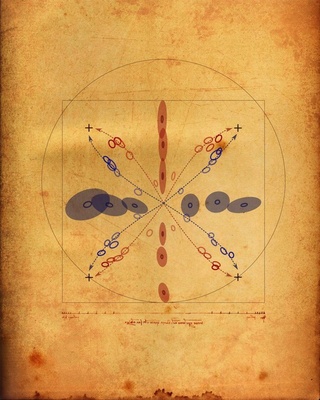
18.07.2012: Once we’ve learned one kind of dance, mastering another one of a similar style is already much easier. This is true not only on the dance floor, but also in many other situations where movements share certain similarities. A recently proposed hypothesis suggests that through “structure learning”, the dynamic and kinematic relationships of similar movement skills are learned and utilised for rapid generalisation to novel skills.
Scientists read out arm movements from brain’s surface: Method opens door for low-risk brain machine interfaces
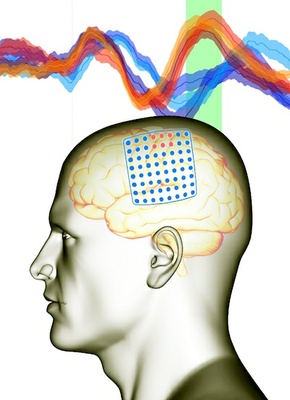
19.06.2012: Interfaces between the brain and a computer could be the key to a more independent life for patients with severe paralysis: Devices that transform the mere thought of a movement into a command for a robotic arm or a cursor on a screen. Scientists from the University of Freiburg and Imperial College London now utilzed for the first time the brain activity associated with an arm movement recorded from the surface of the brain to steer a cursor in real-time. Tomislav Milekovic and his colleagues report these findings in the latest edition of the Journal of Neural Engineering.
Understanding complex relationships: Scientists from Freiburg show how global properties of networks become apparent in local characteristics
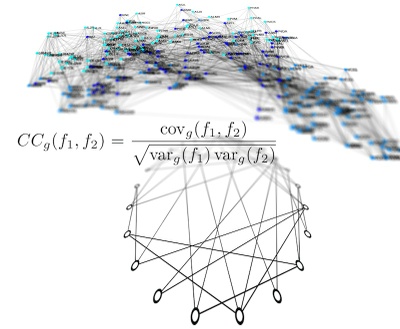
06.06.2012: From infections spreading around the globe to the onset of an epileptic seizure in the brain: Many phenomena can be seen as the effects of network activity. Often it is vitally important to understand the properties of these networks. However, they are often too complex to be described completely. Scientists from the Bernstein Center at the University of Freiburg were now able to show how global features of complex networks can be discovered in local statistical properties – which are much more accessible for scientific investigation. The researchers were able to benefit from the high-performance computing facilities of the Bernstein Center, which are normally used to simulate the activity of nerve cells in the brain.
Finding the right measure: New study allows a more reliable measurement of neuronal interactions
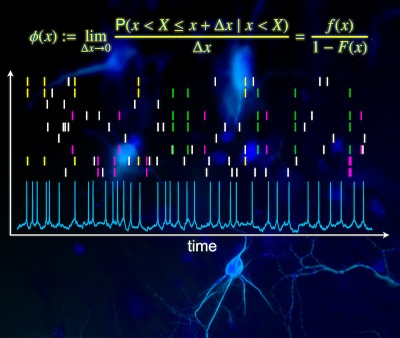
21.05.2012: It happens that groups of neurons in a brain elicit electrical impulses – their spikes – more or less at the same time. But does such correlated activity also play a role for information processing? Does it represent a meaningful event, or is it just a coincidence that is bound to happen in a large population of cells where the numbers reach billions?
New Concepts for University Instruction - BCF among awardees: The University of Freiburg has recognized six projects from various disciplines with the Instructional Development Award (IDA) 2012. The awards are worth € 70,000 each.
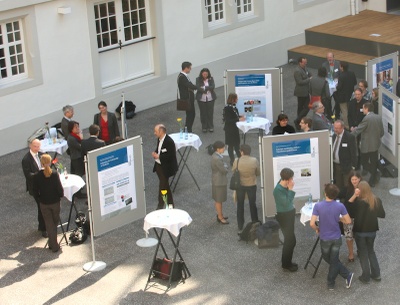
12.04.2012: The University of Freiburg has bestowed the “Instructional Development Award” (IDA) 2012 upon six projects from different disciplines. The official award ceremony will be held on June 20, 2012 during the “Dies Universitatis”. The IDA is endowed with € 70,000 for each project, which can have a duration of up to one year. During this period, the awardees have financial means at their disposal that can be used flexibly and allow them to realize their projects. All Professors of the University of Freiburg can apply.
Why do neurons act in unison? : Putting a well-established idea to new use, scientists can match connection patterns to activity dynamics in networks of neurons.
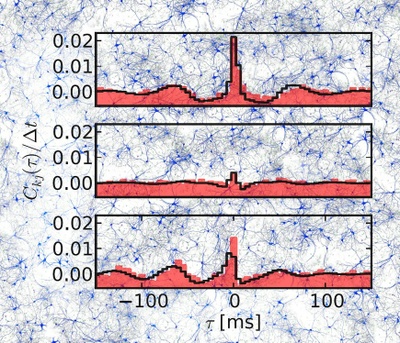
03.04.2012: Experimentalists often observe small correlations between spike trains of neurons (i.e. the sequence of action potentials over time) in local neural networks. These observations can be made in many different areas of the brain’s cortex. Intuitively, this is not surprising: Each neuron is connected to thousands of neighbours and reacts to their inputs, so we even would expect correlations in activity to occur. However, one of the things that remain unclear, is: To which extent do these correlations bear a significance for the function of the network as a processor of information? Or are they simply a natural consequence of the dense synaptic wiring? The answer to this question is still unknown.
Hunting mysterious creatures with the camera: During this year’s Easter holidays, the BCF will host again the holiday program of the University’s family service.
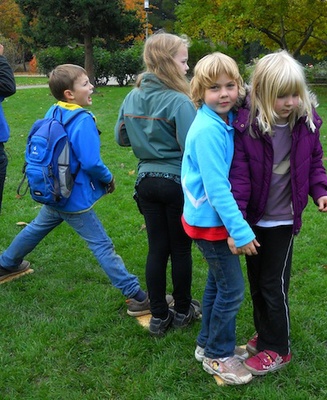
02.04.2012: For two weeks, children aged six to twelve will dive into the realm of mysterious fairies, sly gnomes and cheeky hobgoblins. They will come up with their own creatures, bring them to life by creating costumes of their own, and discover adventurous games and stories. On their way through this mysterious world, they will be joined by a professional photographer who will introduce them into his art. With his help, the children will keep many memories of their adventures in the form of their own, self-made photo books.
Brain Awareness Week at the BCF: Bild Dir ein Gehirn – Perspektiven auf ein faszinierendes Organ [in German]
![Brain Awareness Week at the BCF: Bild Dir ein Gehirn – Perspektiven auf ein faszinierendes Organ [in German] Brain Awareness Week at the BCF: Bild Dir ein Gehirn – Perspektiven auf ein faszinierendes Organ [in German]](https://www.bcf.uni-freiburg.de/news/2012/20120312-baw/@@images/45d6c99b-7d06-41a7-a927-aa45d93831b1.jpeg)
12.03.2012: Im März jeden Jahres laden neurowissenschaftliche Einrichtungen auf der ganzen Welt die Öffentlichkeit ein, sich über aktuelle Themen der Hirnforschung zu informieren. An dieser „Brain Awareness Week“ beteiligt sich auch das Bernstein Center Freiburg. Unter dem Motto „Bild Dir ein Gehirn“ stehen dieses Jahr zwei Veranstaltungen auf dem Plan, die das Thema aus ganz unterschiedlichen Perspektiven betrachten werden.
A model of song syntax generation in the Bengalese finch
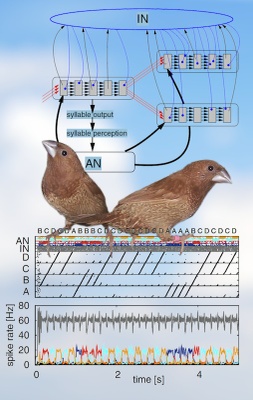
15.02.2012: Bengalese Finches are domestic songbirds that have a long history of helping scientists to understand the generation of complex sequential behavior. Each male Bengalese Finch learns a song from his father that exhibits a distinct and individual syntax. Researchers at the Bernstein Center Freiburg wanted to understand how, on the level of networks of nerve cells, such song formation might come about.
Bernstein’s Scientific Advisory Board convenes in Freiburg
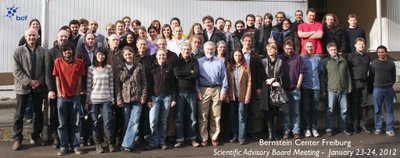
23.01.2012: On January 23 and 24, 2012, the International Scientific Advisory Board of the Bernstein Center convened Freiburg for its first site visit and evaluation.
Jury Award for "The Brain Modulator" at Super 8/16mm film festival
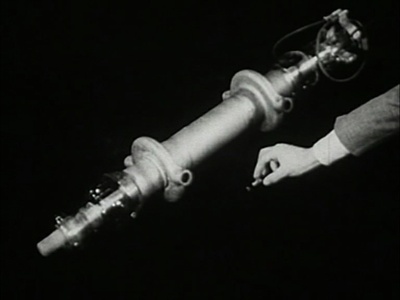
30.01.2012: After winning first prizes at the NeuroVision Film Contest during the Bernstein Conference 2011, Florian Rau's film now received the jury award at the 13th "Dresdner Schmalfilmtage".
Niels Birbaumer receives honorary doctorate of the Complutense University, Madrid
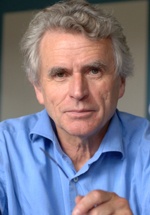
30.01.2012: Niels Birbaumer, a pioneer in neuroprostheses that enable the communication of people with cerebral palsy, receives a honorary doctorate by the Complutense University, Madrid.
New article in “Cerebral Cortex”: Epileptic state stimulates genesis of nerve cells - Neurogenesis suspected in turn to promote epileptic activity
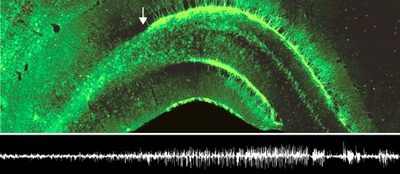
24.01.2012: Epilepsy is one of the most common neurological disorders, but so far, the mechanisms underlying the occurrence of epileptiform activity in the brain are only partly understood. For instance, contradicting evidence fuelled a debate over the question whether epileptic states in the hippocampus lead to a loss of neurogenesis or, to the contrary, do indeed stimulate the creation of new nerve cells.
A powerful tool for the study of neuronal networks: Multiplicative point processes prove ideal to describe the dynamics of populations of neurons in fundamental brain research and engineering applications.
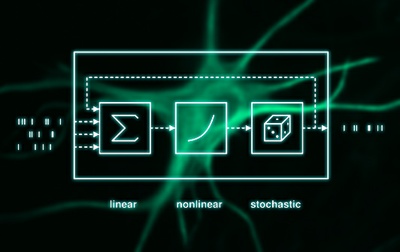
19.01.2012: Neuronal network models serve as mathematical tools to understand the function of brains, and they might as well develop into future tools for enhancing certain functions of our nervous system. However, the mathematical description of processes that happen within networks of neurons can become very complex because of the many factors that may play a role. Finding simpler mathematical ways to describe what happens in the brain – while at the same time holding true over a wide range of conditions – is therefore an important goal.

